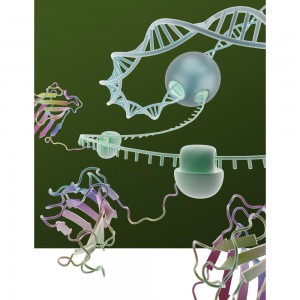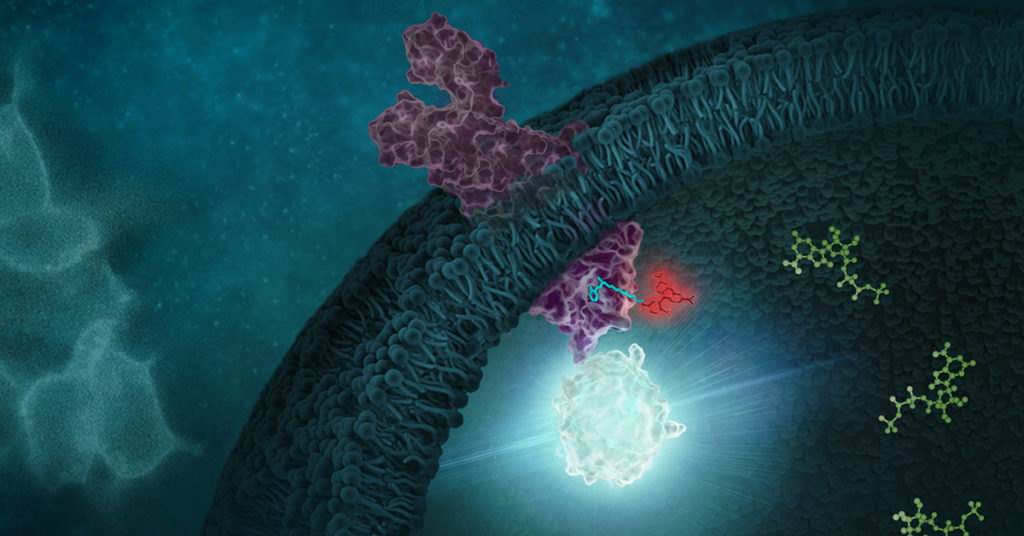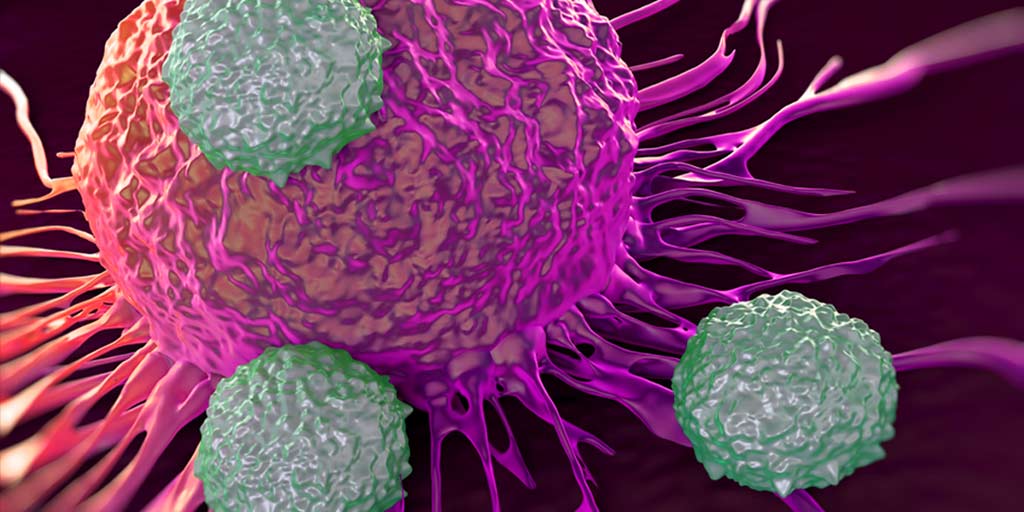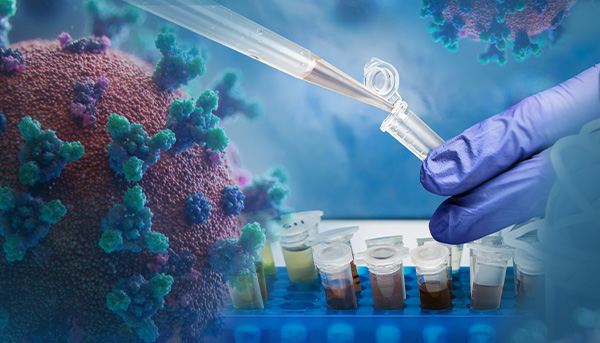On September 4th, 2021 we celebrate National Wildlife Day. This day helps cherish our planet’s biodiversity and recognize issues that impact wildlife. Take a look at three Promega blogs that highlight preservation and conservation efforts being made to support our natural world.
Continue reading “National Wildlife Day: Admiring Our Natural World”General
Psilocybin as Antidepressant: Quick Acting, Lasting Benefits
Depression is not simply a mood disorder, a feeling of sadness, or being ill at ease. Depression can completely shut a person down, manifesting as an inability to make decisions, to take action, to think. Even sleep is affected by depression.
Researchers and clinicians who treat depression are learning that the physical manifestations can be mirrored by internal, cellular changes. Some people with depression have decreases in their gray matter volume, particularly in areas like the hippocampus (important to memory, learning, and emotions) and prefrontal cortex (where higher-level thought and planning abilities are based).
Additionally, imaging has shown a decrease in the number of synapses—the structures through which electrical or chemical signals are passed between neurons and other cells—in persons with chronic depression. Without the signals that synapses transmit, brain function is disrupted.
And without intervention in depression, synapse decrease can continue.
While there are drugs and behavioral therapies to treat depression, these therapies can be slow to act and sometimes ineffective. In addition, once synaptic loss has occurred, these therapies are less effective.
In their August 2021 paper, “Psilocybin induces rapid and persistent growth of dendritic spines in frontal cortex in vivo” (1), Shao et al. state,
Continue reading “Psilocybin as Antidepressant: Quick Acting, Lasting Benefits”“It has long been recognized that these compounds (serotonergic psychedelics like psilocybin) may have therapeutic potential for neuropsychiatric disorders, including depression, obsessive-compulsive disorder and addiction”.
How Does DNA Template Length Influence Gene Expression in Cell Free Systems?

Cell-free gene expression systems are a staple tool for the researcher seeking to understand the regulation of transcription and translation. Many factors can affect the efficiency of cell-free gene expression including vector sequence, reaction components and the template DNA concentration. One factor that has not been extensively studied is how DNA template length influences gene expression.
Continue reading “How Does DNA Template Length Influence Gene Expression in Cell Free Systems?”Oncolytic Viruses: Models and Assays for Developing Viruses That Can Kill Cancer

When we think of viruses, we often think of diseases, pandemics and death. Our impression of viruses is that they are “bad”. But viruses could also be a possible cure for the deadliest disease in modern history: cancer. The therapeutic effects of “good” cancer-killing oncolytic viruses have been documented over a century ago. Records from as early as 1904 described a 42-year old woman with acute leukemia who experienced temporary remission after an influenza infection. Other early reports showed spontaneous remission of Hodgkin lymphoma and Burkitt’s lymphoma after natural infections with the measles virus.
Despite the long history, oncolytic viruses have only recently gained momentum in the scientific community. Dr. Aldo Pourchet, CSO and co-founder of Omios Biologics—a biotech startup in the San Francisco Bay area—is determined to harness the power of oncolytic viruses to develop a new generation of cancer immunotherapy.
How Oncolytic Viruses Work
“One thing that we know for sure is that you need the immune system to fight the cancer,” says Pourchet. “You need to recruit the immune system, and probably the best thing we know for recruiting the immune system is viruses. Our immune system evolved to detect them immediately. That’s why we are still on Earth. It’s because we have been able to fight deadly viruses.”
Continue reading “Oncolytic Viruses: Models and Assays for Developing Viruses That Can Kill Cancer”RIPK1: Promising Drug Target of Chronic Inflammatory Diseases
Today’s post is written by Michael Curtin, Senior Product Manager, Reporters and Signaling.
Inflammation is a defense mechanism that the body employs in which the immune system recognizes and removes harmful and foreign stimuli and begins the healing process. Inflammation can be either acute or chronic. Chronic inflammation is also referred to as slow, long-term inflammation and can last for prolonged periods (several months to years); chronic inflammation is caused by immune dysregulation. This typically takes the form of the body’s inability to resolve inflammation resulting from overproduction of inflammatory cytokines and chemokines, as well as danger-associated molecular patterns (DAMPs) released from dying cells (2). Tumor Necrosis Factor (TNF) is the primary cytokine involved in many common inflammatory diseases and is where many therapies targeting inflammation are focused.

Recent research that RIP kinases (RIPK1 and RIPK3) are important regulators of innate immunity via their key roles in cell death signaling during cellular stress and following exposure to inflammatory and infectious stimuli. RIPK1 has an important scaffolding role in pro-inflammatory signaling where it interacts with TRADD, TRAF1 TRAF2, and TRAF3 and TRADD can act as an adaptor protein to recruit RIPK1 to the TNFR1 complex in a TNF-dependent process. RIPK1 plays a kinase activity-dependent role in both apoptotic and necroptotic cell death. A review article by Speir et al. (1) discusses the role of RIP kinases in chronic inflammation and the potential of RIPK1 inhibitors as a new therapeutic approach for the treatment of chronic inflammation. RIPK1 or Receptor Interacting Protein Kinase 1 is a serine/threonine kinase that was originally identified as interacting with the cytoplasmic domain of FAS. Promega offers several reagents that make studying RIPK1 easier- these include our RIPK1 Kinase Enzyme Systems which includes RIPK1 (Human, recombinant; amino acids 1-327), myelin basic protein (MBP) substrate, reaction buffer, MnCl2, and DTT and is optimized for use with our ADP-Glo Kinase Assay.
Continue reading “RIPK1: Promising Drug Target of Chronic Inflammatory Diseases”Questions Arise about TMB as a Predictive Biomarker for Immune Checkpoint Inhibitor Therapy

Immune checkpoint inhibitor (ICI), or immune checkpoint blockade, therapies are a revolutionary, and relatively new, approach to treating cancer. These therapies work by blocking immune checkpoint proteins that act to negatively regulate the immune system through the PD-1 pathway. Some tumors express immune checkpoints to prevent the immune system from producing a strong enough immune response to kill the cancer cells. When these checkpoint proteins are blocked by an ICI, the body’s T-cells can recognize and kill the cancer cells. ICI therapies show tremendous promise. Unfortunately, not all tumors express immune checkpoint proteins, and so, not all tumors will be effectively treated with ICI therapies. The challenge is differentiating between the tumors that will respond and tumors that won’t.
DNA Mismatch Repair Deficiency Status as Detected by Microsatellite Instability or Immunohisotchemistry are Important Biomarkers for ICI
Biomarkers are measurable indicators of a clinical condition that can be found in tissue, blood, or other fluids. Predictive biomarkers for ICIs can help determine if these therapies are a suitable choice for treatment. Some tumors have deficiencies in their DNA mismatch repair mechanisms. Mismatch repair deficiency (dMMR) leads to the accumulation of mutations across the genome, particularly in microsatellites, which over time can result in higher levels of neoantigen production, rendering the tumors susceptible to the ICI therapy (1–5).
In 2017, Le et al. demonstrated that dMMR status reliably predicted response to an ICI therapy targeting the PD-1 checkpoint protein (6). Following this discovery, ICI based on dMMR determined using either microsatellite instbility (MSI) or immunohistochemistry (IHC), gained clearance from the US Food and Drug Administation (FDA) for microsatellite instability-high (MSI-H) or dMMR by IHC solid tumors. This was the first time a cancer treatment was cleared based on a biomarker regardless of cancer origin (1,7). Since then, MSI-H and dMMR, have become some of the most recognized tissue agnostic biomarkers for improved survival following ICI therapy of solid tumors (6,8,9).
Continue reading “Questions Arise about TMB as a Predictive Biomarker for Immune Checkpoint Inhibitor Therapy”Shifting Conservation Status: Endangered Species Get a Second Chance
On May 21st, 2021 we celebrate National Endangered Species Day. This day helps raise awareness and increase knowledge of endangered species and wildlife, in hopes to save them. We have been lucky enough to collaborate with organizations and partners to help save species that were on the brink of extinction. Take a look at some species that are hoping for a second chance to survive and thrive.
Kit Elizabeth Ann the Black-Footed Ferret

In February 2018, resurrection efforts began for the then endangered black-footed ferret. With the help of the U.S. Fish and Wildlife Service, Revive and Restore, partners ViaGen Pets & Equine, San Diego Zoo Global, and the Association of Zoos and Aquariums, the successful cloning of a black-footed ferret was announced in February 2021. “Elizabeth Ann” was cloned from Willa, a female ferret that died in 1988, using somatic cell nuclear transfer (SCNT). Elizabeth Ann’s genetic variants reveal a lot of much-needed hope for the genetic diversity of wild ferrets. Check out the full story on Elizabeth Ann’s journey here!
Continue reading “Shifting Conservation Status: Endangered Species Get a Second Chance”Making Life Better for Man’s Best Friend: Onchocerca lupi Biomarker Characterization by Mass Spec

A tiny worm called Onchocerca lupi can make life uncomfortable for both humans and their best friends. This thread-like nematode is found in the eyes or under the skin of infected animals. Historically, diagnosis required skin biopsy or surgical removal of ocular tissue, but a recent study demonstrates a new non-invasive diagnostic tool for infection by Onchocerca lupi in dogs.
Continue reading “Making Life Better for Man’s Best Friend: Onchocerca lupi Biomarker Characterization by Mass Spec”Comparing Methods for Detecting SARS-CoV-2 in Wastewater

Wastewater surveillance of SARS-CoV-2 is an increasingly common method for monitoring the spread of COVID-19 within a community. As researchers and public health officials around the world are working together to set up wastewater surveillance systems, there is an urgent need to establish standard SARS-CoV-2 detection methods.
A key leader in this new field is Dr. Gloria Sanchez. She is a tenured scientist at the Institute of Agrochemistry and Food Technology, a center within the Spanish National Research Council. Before the COVID-19 pandemic, her team focused on detecting human enteric viruses in food and water. But soon, detecting SARS-CoV-2 in wastewater became their main focus.
Continue reading “Comparing Methods for Detecting SARS-CoV-2 in Wastewater”Measuring Changing Metabolism in Cancer Cells
Because of the central role of energy metabolism in health and disease, and its effect on other cellular processes, assays to monitor changes in cellular metabolic state have wide application in both basic research and drug discovery. In the webinar “Tools for Cell Metabolism: Bioluminescent NAD(P)/NAD(P)H-Glo™ Assays” Jolanta Vidurigiene, a Senior Research Scientist at Promega, introduces three metabolism assays for measuring oxidized and reduced forms of NAD and NADP.
In this webinar, Jolanta provides background information on why it is important to be able to accurately measure metabolites such as NAD/NADH and NADP/NADPH. She outlines the roles of each, and highlights some of the challenges involved in developing assays that can accurately measure these metabolites. She discusses key considerations for successful NAD(P)/NAD(P)H assays and provides examples of how to use these assays to measure either total (both oxidized and reduced) forms of NAD and NADP, or to measure oxidized and reduced forms individually in a single assay plate.
Continue reading “Measuring Changing Metabolism in Cancer Cells”

